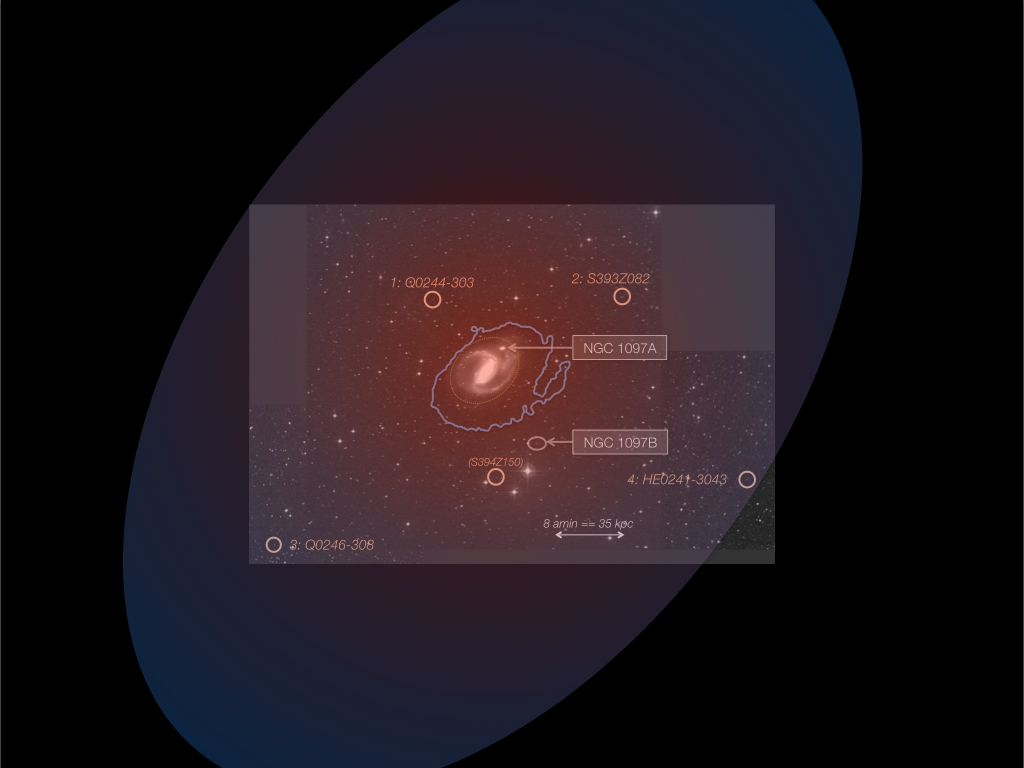Prof. Doron Chelouche and colleagues from Princeton University have detected, for the first time in the local universe, a gigantic gaseous disk revolving around a galaxy. The size of the disk exceeds the visible part of the galaxy by large factor. This discovery was made possible by acquiring unique spectroscopic data using the Hubble Space Telescope.
Studying the physical properties of this disk has made use of Hive's unique computing capabilities in solving thousands of coupled, non-linear differential equations to uncover the physical state of the gas.
The accompanying image shows the galaxy; the recently detected gaseous component, in the form of a titled disk around it, is marked.
Results have recently been published by the Astrophysical Journal.
